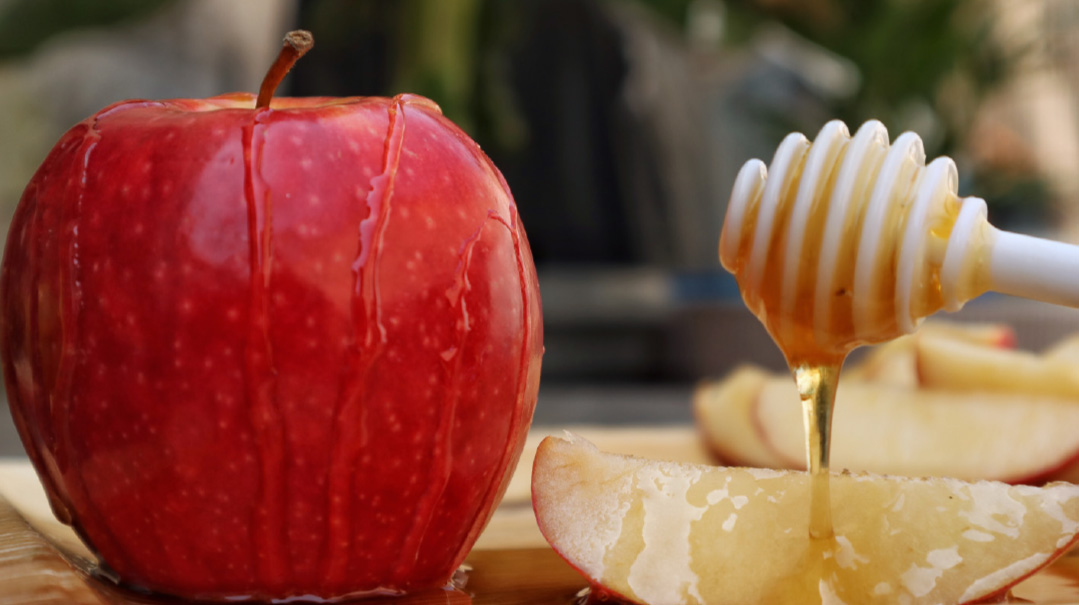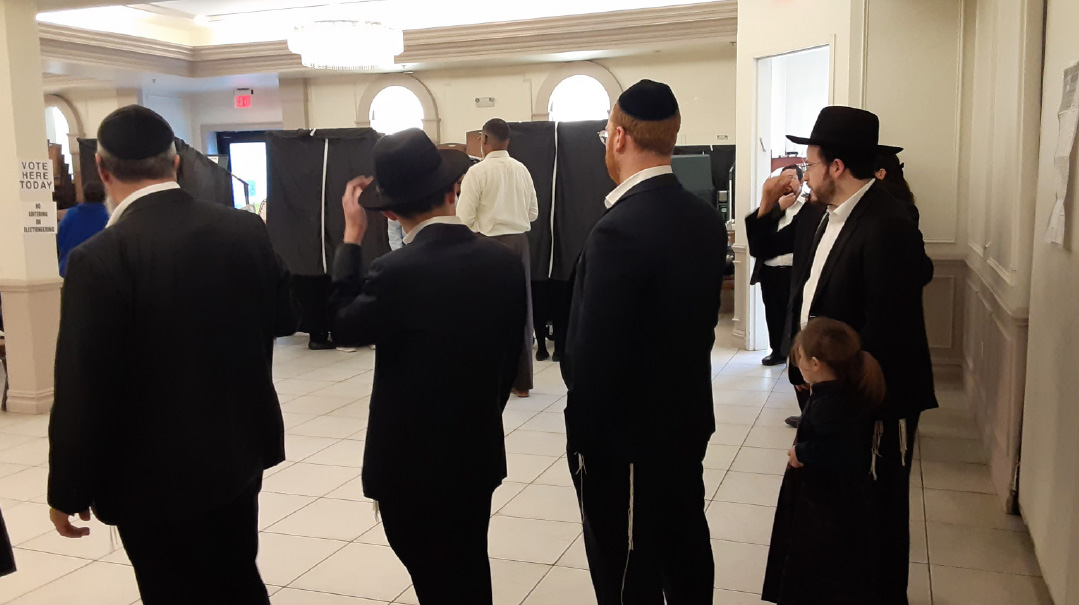Sweet Beginnings
| September 24, 2024The depth of one of the most well-known Jewish customs: dipping the apple in the honey

Long before a certain US technology company made it an icon, the apple was a symbol of wisdom. Legend has it that the English scientist Isaac Newton discovered the principle of gravity when a falling apple struck him on the head. But that’s not the only source.
Although the Gemara (Sanhedrin 70a) and the Midrash (Bereishis Rabbah 15:7) bring different opinions from among the Tannaim as to what the Pri Eitz Hadaas was — wheat, grapes, figs, or an esrog — there does seem to be an opinion that it was, in fact, an apple.
And based on this opinion, we can begin to understand the depth of one of the most well-known Jewish customs: dipping the apple in the honey.
According to Israel’s Ministry of Agriculture and Rural Development, 1,500 tons of honey, worth NIS 40 million, is consumed in that country during the High Holidays, and apple consumption increases by 68 percent.
But this minhag is not mentioned anywhere in the Gemara. Where does it come from?
And perhaps more importantly, what is its message to us?
The oldest source for the tradition of eating apples on Rosh Hashanah comes from the Machzor Vitri, written in the 11th century, which states that “the Jews in France have the custom of eating red apples on Rosh Hashanah.”
Interestingly, this source only mentions red apples — perhaps because they are sweeter — while honey is not mentioned at all.
In fact, the custom of eating honey on Rosh Hashanah is even older than that of apples, and was practiced by Rav Natronai Gaon (apples are not mentioned).
The apple and honey custom as we know it is found centuries later in the Tur (Rav Yaakov ben Asher), who calls it “minhag Ashkenaz.” The Maharil (Rav Yaakov Levi Molin), who is a source for many minhagei Ashkenaz, also mentions it.
The Rema brings this minhag into the Shulchan Aruch, and so it is common among all Ashkenazi Jews. Sephardic Jews have different traditions, and while Moroccan Jews also eat apples with honey, other Sephardic communities avoid honey on Rosh Hashanah for kabbalistic reasons, as it symbolizes middas hadin. According to Ben Ish Chai (1835-1909), apples should instead be dipped in sugar or baked with sugar.
But even if we’ve identified a source, we still must understand: What is its meaning? What are we meant to learn from it?
Rav Menashe Klein, in his sefer Mishneh Halachos, writes the following beautiful idea:
There is an opinion that the Pri Etz Hadaas was an apple. He doesn’t quote the source, but he is probably referring to the midrash quoted by Rashi in parshas Toldos.
After Yaakov, dressed as Eisav, appears before Yitzchak to receive the brachos, the Torah relates that Yitzchak smells his clothes and subsequently blesses him (Bereishis 27:27).
Rashi quotes the midrash that Yitzchak “perceived the smell of Gan Eden,” and the Gemara says that “the smell of the fields” refers to apple orchards. It appears that apples symbolize Gan Eden. The Zohar writes explicitly that the Eitz Hadaas was standing in the middle of an apple orchard.
This seemed to be Rav Klein´s reason for believing that the fruit of the Eitz Hadaas was an apple — for this is clearly the fruit of Gan Eden.
The Rosh (Rabbi Asher ben Jechiel, 1250–1327) in his commentary on Berachos quotes the opinion of Rabbeinu Yona of Gerondi (1200–1263) that if residue of a bee falls dissolves into honey, we can assume that it has actually been transformed into honey and thus may be eaten.
Thus we see that the fruit that was used in the commission of the severest of all sins is dipped in honey — which has the property of transforming tumah (bees) into pure, kosher, sweet honey.
This, Rav Klein explains, is the very dynamic we seek to achieve on Rosh Hashanah.
The Gemara says that if one returns to Hashem out of fear, his aveiros are forgiven. However, if he does so out of love for Hashem, all his aveiros are transformed into zechuyos.
Each year, on Rosh Hashanah, we take our “apple,” our package of sins, and dip them into honey. We do teshuvah mei’ahavah, transforming our sins into zechuyos.
Rav Klein uses this idea to further explain a midrash in Bereishis Rabbah that raises the question of whether Hashem is more interested in maaseihem shel resha’im (the deeds of the wicked) or maaseihem shel tzaddikim (the deeds of the righteous). The midrash concludes that Hashem prefers the maaseihem shel tzaddikim.
This is a midrash pli’ah! What was the Midrash’s a priori assumption that Hashem would prefer maaseihem shel resha’im?
Rav Klein explains that the question of this Midrash was that perhaps Hashem desires the maaseihem shel resha’im who did teshuvah mei’ahavah and turned all their aveiros into zechuyos more than the maaseihem shel tzaddikim who only did mitzvos.
Although these deeds started out as something wicked, they ultimately transformed into something holy, virtuous, and sweet.
When we dip the apple in the honey and say “shetechadesh aleinu shanah tovah u’mesukah,” we should realize the potential of Rosh Hashanah and the incredible heights we can reach with our teshuvah.
Rabbi Dovid Gernetz is a musmach of Rabbi Yitzchak Berkovits and is currently a maggid shiur at the Rabbinerseminar and the assistant rabbi of Kahal Adass Yisroel, both in Berlin.
(Originally featured in Mishpacha, Issue 1030)
Oops! We could not locate your form.







